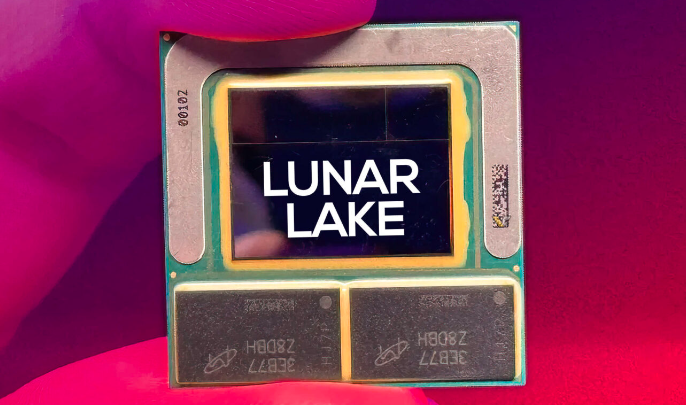The ensuing weeks in the personal computing realm promise a whirlwind of activity. From now until mid-June, a plethora of conferences and exhibitions, including Microsoft Build and the renowned Computex Taiwan, are set to take place. With all three PC CPU manufacturers scheduled to present, a deluge of product announcements is expected. However, Intel seeks to steal a march on its competitors with an early unveiling of its next-gen mobile processor, Lunar Lake.
Prelude to Computex 2024
Intel’s upcoming presentations at Computex 2024 are shrouded in secrecy, but it is evident that the next-gen CPUs—Lunar Lake for mobile devices and Arrow Lake for both mobile and desktop—will be the highlights. Although Intel has previously given a glimpse of these processors, today’s revelation provides a deeper dive into the Lunar Lake CPU.
Strategic Reveal
Today’s disclosure is ostensibly a preview of Intel’s forthcoming Tech Tour event, scheduled for late May. Unofficially, this timing coincides with the embargo lift on Qualcomm’s Snapdragon X laptop announcements, which are expected to reach the market next month. In contrast, Lunar Lake laptops will not be available until the fourth quarter of this year. This maneuver by Intel appears to be a calculated effort to overshadow the Snapdragon X launch, underscoring the competitive turbulence in the laptop CPU market.
Lunar Lake: Architectural Innovations and Efficiency
First introduced last autumn, Lunar Lake has been championed by Intel as a highly efficient mobile processor. As the successor to Meteor Lake, it represents Intel’s second mainstream tiled CPU, featuring both new CPU and GPU architectures that build upon its predecessor.
Despite Meteor Lake’s recent debut, Intel is already pivoting to Lunar Lake, driven by their aggressive 5 Nodes in 4 Years (5N4Y) manufacturing strategy. The urgency is compounded by formidable competition from AMD and Qualcomm, both vying for market share in mobile processors.
Production Milestones
Development of Lunar Lake is complete, with Intel claiming adherence to all production milestones. This B-stepping design is already in production, with shipments to OEMs anticipated in Q3 2024, leading to retail availability in Q4.
Manufacturing Ambiguities
Intel has yet to disclose the specific manufacturing processes for Lunar Lake and Arrow Lake. As part of their strategic realignment, Intel’s chip design teams can choose their fabrication partners, which may include TSMC, as was the case with Meteor Lake. The details remain veiled for now.
Technical Insights
Using the same die diagram presented at Intel Vision, Lunar Lake exhibits a more compact design with three tiles: SoC, compute, and a structural silicon tile, reduced from four active tiles in Meteor Lake. This streamlined configuration aligns with Intel’s focus on energy efficiency, minimizing the power-intensive process of data transfer between dies.
Memory and Core Architectures
Lunar Lake integrates on-package LPDDR5X memory to reduce the memory bus length, enhancing overall compactness and efficiency. It introduces new P-core (Lion Cove) and E-core (Skymont) architectures, promising significant improvements in IPC and performance-per-watt.
Core Configuration
One disclosed configuration for Lunar Lake features a 4P + 4E design, in contrast to Meteor Lake-U’s 2P + 8E + 2LP configuration. This represents a shift towards a more balanced core design, emphasizing performance cores.
GPU Architecture
Lunar Lake incorporates a new GPU architecture, Xe2, which aligns with Intel’s forthcoming Battlemage discrete GPUs. This includes the Xe Matrix eXtension (XMX) cores, enhancing feature parity with desktop counterparts and supporting advanced technologies like Intel’s XeSS temporal image upscaling. The new iGPU promises a 50% increase in raster graphics performance.
AI Capabilities
Lunar Lake’s AI potential is bolstered by XMX cores, delivering over 60 TOPS (INT8) for neural networking computations. A new NPU, unnamed and detailed, is expected to achieve a minimum of 45 TOPS at INT8 precision, significantly outperforming Meteor Lake’s NPU.
Competitive AI Landscape
Intel, Qualcomm, and AMD are all vying for supremacy in AI workloads, each touting their NPU capabilities. Intel’s focus is on raw performance and robust software support, aiming to lead in the AI domain.
Power Efficiency and Battery Life
Intel is keen to improve power efficiency with Lunar Lake, aiming to surpass previous generations and rival Apple’s M-series. The new SoC die and its low-power island are central to this effort, targeting substantial gains in idle power consumption.
Performance Projections
Intel has released performance expectations for Lunar Lake, emphasizing improvements in both performance and battery life compared to AMD and Qualcomm. These projections should be viewed with caution, as market conditions may evolve.
AI and GPU Performance
Intel highlights a 40% performance advantage in AI tasks over Qualcomm’s Snapdragon X Elite and AMD’s Ryzen 7 8840U. Additionally, a 50% improvement in GPU performance over Meteor Lake is claimed, based on 3DMark Time Spy benchmarks.
Retail Availability
Lunar Lake processors will be shipped to OEMs in Q3, with retail laptops expected in Q4, just in time for the holiday season. Intel’s upcoming Tech Tour and Computex keynote will provide further details.
This article was originally published on anandtech. Read the orignal article.
FAQs
1. What distinguishes the Lunar Lake CPU from its predecessors?
Lunar Lake introduces new P-core and E-core architectures, enhanced AI capabilities, and improved power efficiency, building on the foundation laid by Meteor Lake.
2. When will Lunar Lake laptops be available for purchase?
Lunar Lake laptops are expected to reach retail shelves in the fourth quarter of 2024.
3. How does Lunar Lake’s GPU architecture compare to previous Intel GPUs?
Lunar Lake’s GPU architecture, Xe2, offers a 50% increase in raster graphics performance and includes advanced features like XeSS temporal image upscaling.
4. What is the significance of Lunar Lake’s AI capabilities?
Lunar Lake’s AI capabilities, powered by XMX cores, enable high-performance neural networking computations, with over 60 TOPS (INT8) expected.
5. How does Intel plan to enhance power efficiency with Lunar Lake?
Intel’s new SoC die and low-power island aim to deliver significant improvements in power efficiency, targeting substantial gains in idle power consumption.
